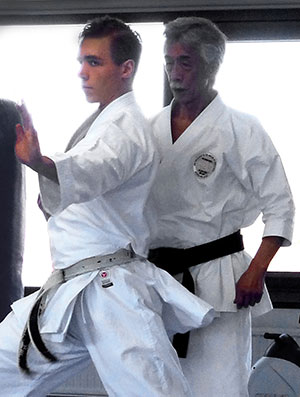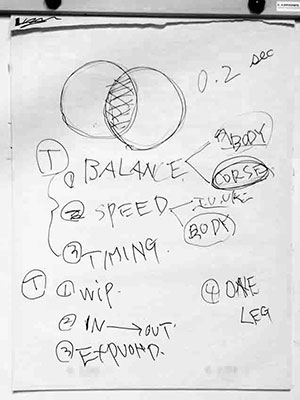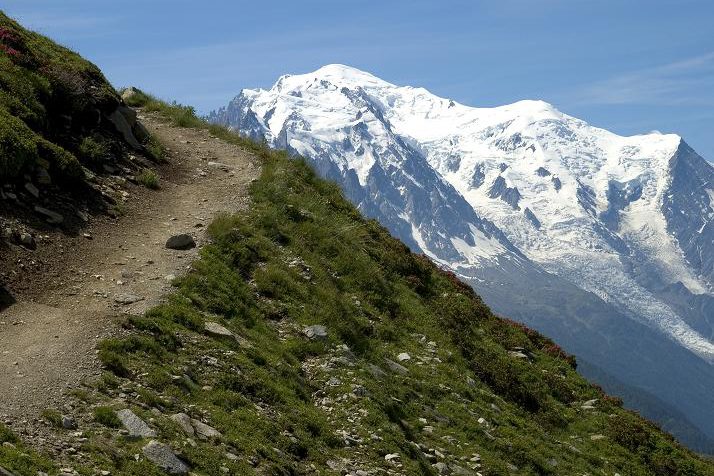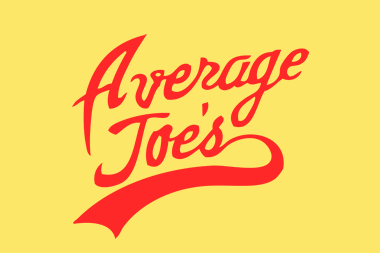“OPEN YOUR MOUTH!”
For the 597th time in a row, after hours of grueling kata practice, sensei Inoue Yoshimi commands me to open my mouth again.

“Yes sensei!”
I feel like a retarded gold fish.
Apparently, I can’t execute snappy and smooth Karate techniques with my mouth closed.
Needless to say, that’s just one of the hundreds of straightforward insights I had recently, when I got the unique opportunity to train privately with the world’s greatest kata coach alive.
Soke Inoue Yoshimi.
I’ve written about sensei Inoue before.
His list of famous students is pretty epic:
Rika Usami, Atsuko Wakai, Ryoki Abe, Antonio Diaz, Mie Nakayama, Nao Morooka, Hisami Yokoyama, the Hasegawa brothers…
He’s literally a kata champion machine.
Nevertheless, hubris doesn’t exist in Inoue’s vocab. He remains very mortal.
No fancy words. No spiritual claims.
Just raw skill.
In fact, at 68 years young, he still shows every single technique himself!

Hour after hour.
Sharp, fast and über snappy.
So…
What’s his *secret*?
Dude.
Are you kidding me?
He has like a THOUSAND!
And today I just HAD to share some of those with you, my dear Karate Nerd™.
Sounds good?
Great. So let me present a list of 42 things I learned from training with soke Inoue Yoshimi recently, the world’s greatest kata coach.
Check it out:
1. Open your mouth. If your mouth is closed, your jaw tightens up, your shoulders get stiff and your techniques will become tense. So open your mouth. This allows air to flow freely to/from your lungs – making your techniques relaxed, natural and powerful.
2. Train less. Improve more. Although Inoue’s speciality is elite training for world-class performance, he is quick to point out that excessive Karate training is bad for your health. Two hours a class, three days a week is his recommendation for the optimal training dose.
3. Use your posterior chain. Humans have a big brain, right? We’re smart. But when it comes to fighting, we are physically weaker than many animals! Dogs, cats, ants, horses, rats… they are stronger, more agile, much faster and more athletic than a human will ever be. So let’s use our smart brain to study animals: Does a horse have abs? Nope. Does a dog have huge biceps or pecs? Nope. So why do humans insist on training these “useless” show-off muscles all the time? Animals have incredibly strong posterior chains (muscles on your back, hamstrings, glutes, triceps, lats etc.). Focus on those instead. That’s where beastlike power comes from.
4. “Karate is 99% feeling.” Many people train hard, get sweaty and go home happy. That’s great! But, according to Inoue sensei, they never really improve. To improve you need to use feelings, spirit and imagination in your training. 99% of improving is about connecting your body to your brain. Tap into your senses!
5. Use your heels. Turn on your heels. Step from your heels. Always keep your weight above your heels. This keeps your shoulders relaxed and your knees unlocked, which allows for snappy and quick movements.
6. “Smile!” When Inoue sensei thinks you are tense, he never says “relax!“. Instead, he says “smile!” – which is a psychological trick to make you relax. It’s hard to be tense when you’re smiling! Plus, you perform better when you’re happy.
7. Hips level to the floor at all times. Except in rare instances in some kata (Empi, Kururunfa). Why? Because it’s natural. That’s how we walk.
8. As you get older, work with nature – not against it. Inoue is 68 years and weighs 58 kilograms. Anybody can beat him in arm wrestling. But when it comes to Karate, it’s not just about size, strength or age. The older you get, the more wisdom, technique, feeling and experience you need to apply. Your body weakens as you get older, but other skills take over. It’s a natural progression. Don’t fight nature – take advantage of it.
9. Imagine your body is a car. Your center, called “tanden” in Japanese, is the engine. Your hands and feet are just wheels. The steering wheel is in your head.
10. Don’t lift your knee for kicking. That’s for beginners. Instead, focus on activating the powerful muscles of your ass.
11. Don’t relax your knees when stepping or turning. That’s for beginners. Instead, relax your hips. Imagine unhinging the hip joint, letting your legs drop from the hip socket and then move/step/turn. This is faster than simply relaxing your knees (which will automatically tense your quadriceps = you become slow).
12. There are two kinds of Karate: #1. Karate for martial arts & self defense. #2. Karate for competition. The best way to improve both is by focusing on how to use the body efficiently. This is what excites Inoue sensei. No matter who you are, you can always improve body mechanics and principles of efficient movement.
13. When executing double techniques (with both hands), don’t twist your hips. Instead, act like a spring or wave. This is how you generate energy when using both hands simultaneously.
14. Your shoulder should always be in front of your chest. Never parallel to it. The same goes for your hikite arm!
15. Use impact tools when in doubt of technique. When you’re wondering about the most efficient way to execute a technique (i.e. how to move your legs with your arms), use a boxing bag or makiwara or kicking pad and experiment. Which one is more powerful? Try. We compared popular tournament kata like Anan, Heiku and Paiku, and discussed how some Okinawan masters teach jumping, skipping and stomping footwork in these kata – then tried different variations of these techniques against a boxing bag. Find the most effective way and use that.
16. Why do we step forward with blocks in many kata? If you consider the practical application (bunkai), it’s pretty unsmart to meet force with force, right? Well, the secret is that a block’s “preparatory move” is actually the real block. This makes way for you to then step forward with what looks like the “block” – but could actually be an attack, takedown or joint manipulation.
17. Depth over breadth. Plunge into the detailed mystery of the micro in order to understand the macro. Improving one small thing will improve many things.
18. In zenkutsu dachi (front stance), your weight should be on the back leg – not your front leg. The back leg should be like bamboo; strong but flexible. (Not stiff like a stick). Relax your front leg. It only acts as support. Your back leg controls the action and power.
19. To do great arm techniques, forget your arms. Focus on your core instead. Just whip your center. Seriously. Don’t care about your arms. Ignore them. Think about your core instead, and your arms will fly out automagically. It’s all about initiating the whip action.
20. Relax your pectoral muscles. If you tense your chest muscles when you punch, your collar bones will lock down. This tightens your shoulder’s connection to the arm, and makes it impossible to have relaxed and snappy techniques. Skip chest day at the gym, bro. Relax your pecs. Flow freely.
21. Your Karate style doesn’t matter. As long as you have one head, two legs and two arms, human body mechanics and universal principles of efficient movement are the same across all styles.
22. If you have difficulties with balance, forget balance. Focus on speed instead. Speed, speed, speed! Faster, faster, faster! Your body is smarter than you think, and will instinctively keep you balanced in hard movements. But NOT if you keep thinking about it. So focus on speed. Balance will take care of itself.
23. 90/10 weight distribution in neko ashi dachi (cat stance). Weight on your back heel. You should be able to lift your front leg. Rear foot 30 degrees out.
24. Always ask (how & why). When soke Inoue was young, he was never allowed to question anything in the dojo. Today, he encourages questioning like crazy. The secret to staying motivated, he believes, is to continuously ask questions. Specifically – how & why. If you don’t know, you don’t improve!
25. 0,2 seconds. That’s how fast your techniques should be. It’s a blink. 0,3 secs if you’re a slow blinker.
26. It’s okay to learn kata patterns/directions from a video. But only a sensei can teach you how to perform it.
27. “In my dojo, we start practice 9 in the morning and finish 11 in the evening. Sometimes we forget food.” (Wait… hold on. You forget WHAT?!)
28. People think kata is a set of poses, i.e A, B, C, D. But that’s wrong. Kata is not A, B, C or D – it’s how you get from A to B to C to D. Therefore; a good sensei, coach or referee should always look for the movement between techniques, not just the finishing pose. That’s what separates good kata from bad.
29. Expand. Never contract or squeeze your techniques. Funnily enough, this is what most people do and call “kime”. But according to Inoue, you should do the exact opposite. Imagine kicking a soccer ball or football. You don’t tense up at the moment of impact, do you? Of course not. The ball won’t fly anywhere. The same goes for hitting a baseball or golf ball. At the end of your movement, you expand to really get the ball flying, right? So do the same with your Karate techniques. Instead of locking down and tensing your body at the moment of impact, expand your movement and let it carry on through. No contraction. Just expansion.
30. When you do side kicks (yoko geri), shape your foot like a front kick (mae geri). All your toes should be bent up, and the point of impact should not be the blade of the foot, but the side of the heel.
31. When you slide/step and punch, stop a millisecond before you punch. This allows your movement energy to transfer to your arm. Imagine driving a car and crashing: The car stops abruptly (your body), but the passenger keeps flying out the window (your arm). So don’t punch at the same time as you move. But don’t punch too late either. This timing is super important and hard.
32. There are actually three points of pivot. Heel, middle of foot and ball of the foot. Which part should you use? Mostly the heel (see point 5).
33. When you move forward in cat stance (neko ashi dachi), rotate on the center of your foot. Not your heel. Not your toes. But the center of your foot. This is the correct way for neko ashi dachi. (It’s curious facts like these we’ll have to explain twice when the aliens land.)
34. The One Leg Principle. You never use both legs equally. One leg is always the “power leg”. If you can figure out which leg is the power leg in every technique, you’ll instantly boost your power. This is awesome. For instance, if you do a right low block (gedan uke/barai) in a shiko dachi/kiba dachi, your left leg is the power leg. That’s where all your power should be. Your right leg should just act as support.
35. Stances are hard for Westerners, because our legs are so long. That’s why kata is easier for Japanese people. But kumite is easier for Westerners, because “Japanese people can’t kick as high”.
36. Relaxed scapula = snappy technique. Your shoulder blade is the base of your arm, and it needs to be loose. If you have stiff shoulders, Inoue sensei recommends that you do exercises for shoulder mobility to the back, not just front/up/sides.
37. “Martial arts support gravity. They have friendship.” To move faster, cooperate with gravity. Let it literally pull you into each stance.
38. When turning, drop 4-5 cm. As your body drops, turn around and catch it in the next stance. It’s all about quickly unlocking and locking your joints.
39. Feeling sluggish? Blame your sensei. If a sensei counts with a lame voice (“ichi, ni, san…”), it’s hard to do your best techniques. A sensei should count with great passion (“ICHI, NI, SAN!”) in order to inspire and encourage everyone to give their utmost. Coincidentally, Luca Valdesi once told me the same.
40. Beginners punch with the hand. Experts punch with shoulder blade. Masters punch with the core.
41. You can make excuses, or you can make progress. You can’t make both.
42. Open your mouth. Again.
The end.
Now…
Time for a mini-contest:
Win the handwritten “secret notes” of Inoue Yoshimi
- Step 1: Choose ONE of the above points from Inoue sensei.
- Step 2: Leave a comment below and tell me exactly WHY & HOW you will use that point to IMPROVE your Karate.
- Step 3: Smile! ; -)
I will personally choose a winner and send YOU the huge notes of soke Inoue Yoshimi.
Thanks for reading.
Good luck!
___________
Disclaimer: The information presented in this article was solely based on my own interpretation from training with sensei Inoue and should not be viewed as an official representation of Japan Karate-do Inoue-ha Shito-ryu Keishin-kai or soke Inoue Yoshimi.



141 Comments